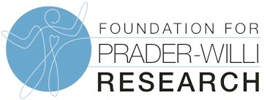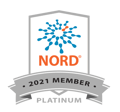Clinical trials are the bridge between discovery and real-world treatments, and families in the Prader-Willi syndrome (PWS) community play a critical role in making them possible.
In this 63-minute presentation, Dr. Theresa Strong (FPWR Director of Research Programs) reviews clinical trials that are underway or actively enrolling. A panel of researchers and industry experts then discusses studies focused on hyperphagia, sleep, and new therapeutic approaches.
Watch the presentation
If you’re short on time, use the timestamps below to jump to the sections that matter most to you.
Highlights
-
Many trials are delayed or not completed because of low enrollment. Families can make a real difference by learning about studies and considering participation.
-
Trials include safeguards: FDA review, site-level physician oversight, Institutional Review Board (IRB) ethics review, and independent Data Safety Monitoring Board (DSMB) monitoring.
-
Many sponsors cover travel and are adding remote visits to reduce burden.
-
If a trial is not a fit, you can still help through the Global PWS Registry and biorepositories.
Presentation Summary With Timestamps
00:00 Lisa Matesevac Presents
1:46 Dr. Theresa Strong, Director of Reseach Programs at FPWR, presents the role of clinical trials
-
A top reason that clinical trials and research studies are delayed or not completed is insufficient participation. This is something the PWS community can help change.
2:37 Clinical Trial Phases
After basic science and candidate selection, a drug or device that may help in PWS goes through phases:
-
Phase 1: Small, first-in-human safety study. In rare disease, often about 10 to 15 people, and sometimes not disease-specific.
-
Phase 2: Early look at efficacy and whether the therapy is engaging its target; sometimes placebo-controlled; still centered on safety; typically about 40 to 50 participants. If early efficacy is seen, dosing is refined for Phase 3.
-
Phase 3: The pivotal trial, usually with a true placebo control. In PWS, often 75 to 150 individuals. Trials must meet endpoints that are agreed with the FDA before the trial begins; endpoints cannot be changed after a trial has begun.
-
Phase 4: Sometimes conducted after a drug is approved for another indication.
5:37 Risks and Benefits of Clinical Trials and Protections for Study Participants
Benefits
-
Early access to a potentially effective treatment. For example, some participants accessed VYKAT years before approval.
-
Building a relationship with a team at an expert PWS site.
-
Travel costs are usually covered by the sponsor, so out-of-pocket expense is often minimal.
-
Most importantly, helping the entire PWS community learn whether a therapy works.
Risks and burdens
-
The trial may not work for your loved one.
-
Time investment for visits and check-ins.
-
Some risks and side effects may not be fully known at the start.
-
Sponsors are working to reduce burden with options like remote visits.
Protections for participants
-
The FDA reviews all animal data before a clinical trial can begin.
-
The study site investigator (the study doctor) receives sponsor information, including animal studies, and should understand potential safety concerns.
-
An IRB (ethics board of physicians and experts) reviews the protocol and approves or rejects it.
-
Most trials have an independent DSMB that reviews safety data during the trial and can raise concerns.
-
If the FDA hears reports of safety problems, it can place a clinical hold and pause the study until more data are provided.
8:43 Should I enroll my loved one?
Enrollment is a personal decision.
-
For logistics (how often, how long, travel), talk with the study site coordinator.
-
For safety questions, speak with the site physician.
-
If you do not participate in a trial, you can still contribute through the Global PWS Registry and biorepositories.
9:53 Where to Learn More
-
CISCRP is an excellent nonprofit that has information about trials. They have checklists about how to prepare for a trial and what you should ask before you enroll.
-
FPWR and PWSAUSA also have pages devoted to clinical trials.
-
Thank you to all of the families who participate in clinical trials and the research studies that support clinical trials.
Clinical Trials in Focus (Panel)
Following Dr. Strong’s overview, panelists discuss ongoing trials that may offer new hope for individuals with PWS:
12:20 Aardvark Therapeutics — HERO (ARD-101 for hyperphagia)
Speaker: Manasi Jaiman, pediatric endocrinologist and chief medical officer at Aardvark Therapeutics, discusses their Phase 3 clinical trial; HERO (Hunger Elimination or Reduction Objectives.)
-
Mechanism: ARD-101 is an oral investigational therapy designed to act in the gut. It interacts with taste receptors in the intestines and signals fullness to the brain through the gut–brain axis, specifically a CCK-mediated pathway.
-
Phase 2 signals: Early improvement in hyperphagia, including a 47% decrease within 28 days for participants in that study; positive safety; decreased fat mass and increased lean mass.
-
Phase 3 design (HERO): Global study of ARD-101 vs placebo. About 20 weeks total with 12 weeks of treatment. Age 13 and older at this time, with plans to study younger ages. Burden reduction: 4 in-clinic visits, 3 telehealth visits, and covered travel and lodging. A follow-up study is planned in which all participants receive active drug.
16:54 Harmony Biosciences — TEMPO (pitolisant for excessive daytime sleepiness)
Speaker: Ann Adee from Harmony Biosciences discusses the TEMPO trial.
-
Design: Phase 3. Screening period and baseline visit, then 11 weeks of pitolisant or placebo, with an option for a one-year open-label extension.
-
Eligibility: Age 6 and older, with no upper age limit. Requires a confirmed PWS diagnosis and excessive daytime sleepiness (EDS); not every person with PWS has EDS.
-
Visits: 5 visits during the double-blind period; if participants remain in the open-label extension, there are 3 additional visits.
-
Sites: About 40 sites globally, many in the United States. Pitolisant is approved for narcolepsy in the U.S. but is not approved for PWS.
-
Burden reduction: A U.S. at-home only option is planned (a nurse comes to the participant’s home and meets the investigator via telehealth). Participants who travel will have all travel costs covered for the participant and a caregiver.
-
Enrollment at session time: 32 enrolled; goal 134; about 102 more needed.
20:12 FPWR — VNS4PWS (transcutaneous vagus nerve stimulation for temper outbursts)
Speaker: Caroline Vrana-Diaz (FPWR research program manager; runs clinical operations for VNS4PWS) explains how vagus nerve stimulation is being studied for PWS. Dr. Vrana-Diaz runs the clinical operations for the VNS4PWS trial.
-
Type: Phase 3 clinical device trial sponsored by FPWR. Evaluates the safety, efficacy, and acceptability of transcutaneous vagus nerve stimulation (tVNS) to reduce temper outbursts in PWS.
-
Eligibility: Confirmed PWS, ages 10 to 40, history of temper outbursts over the last 6 months, and stable medications.
-
Visit schedule: Active portion is 1 year with 13 study visits: 2 in person and 11 telemedicine. One blood draw total, done at a nearby lab.
-
Randomization: Two active dosing arms; no placebo. A 9-month active treatment period is followed by a 3-month off-treatment period, with an option for a one-year open-label extension.
-
Burden reduction and support: FPWR partners with Angel Flight, which covers airline and train travel to in-person visits.
-
Sites: 14 active clinic sites across the United States, with 3 additional sites opening.
22:43 Light therapy for excessive daytime sleepiness (EDS)
Speaker: Deepan Singh, MD.
-
Design: All-virtual screening with a 2-week pre-randomization sleep diary to confirm difficulty with EDS. At the time of recording, the team had only 10 devices remaining for participants.
-
Participation: Eligible participants receive a light therapy device and a Fitbit to keep.
-
Rationale and outcomes: Interim data were very promising. The team is assessing not only sleepiness but also hyperphagia, aggression, and irritability. Light therapy may support circadian rhythm; cell-level studies suggest it can help dendritic formation and cell growth.
-
A testimonial and a QR code for more information were shared in the session.
27:57 Medication exclusions and safety — HERO (ARD-101)
Speaker: Manasi Jaiman, MD.
-
Protocol exclusions at session time: Insulin-requiring type 2 diabetes and certain antipsychotics.
-
Phase 2 dosing: The study was run in two parts. Part 1 evaluated 200 mg twice daily; Part 2 escalated the dose up to 800 mg twice daily, which is the Phase 3 dose.
-
Findings: Hyperphagia continued to improve as dose increased. The safety profile did not differ between the lower and higher doses.
29:35 Enrollment Update for TEMPO
-
Harmony hopes the at-home site option helps with recruitment and that it opens it up to more people. They need another 102 participants.
-
They have 32 enrolled right now and are incredibly grateful for those people.
-
They will not stop enrolling until they reach 134 participants.
31:09 Device Details about VNS4PWS
-
FPWR realizes wearing a device 4 hours a day for 9 months is a lot to ask.
-
The device is handheld, can be carried in a belt bag or pocket, and is worn over the ear like a headphone.
-
It can be used during daily activities: walking, driving to and from school, meals, homework, puzzles, or watching a show. The goal is to integrate use into daily life.
-
There is a generous on-ramp for families: sessions begin at 15 minutes and gradually increase toward 4 hours per day.
-
Devices are durable, and FPWR will replace broken devices
32:42 Importance of Sleep with Dr. Singh
-
Restful sleep is essential for health. Light therapy tends to normalize sleep cycles. EDS is often linked with disrupted nighttime sleep. Re-organizing how the brain rests depends on circadian rhythm, which is influenced by sunlight and can be supported with artificial light.
36:43 Diversity in Clinical Trials
-
Dr. Manasi Jaiman said starts with advocacy groups and direct site engagement to understand each site’s population and access gaps by region and demographics.
-
What are their gaps? You can't assume there are gaps, but you have to actually find out per site, per region, demographically where you're going, who has access, and how people are hearing about your clinical trials.
-
Dr. Jaiman thinks it's multifactorial and their plan is to engage with all of these and is working with the BIPOC community to understand their gaps and to fill them. That comes with site engagement and through advocacy groups and a partnership with multiple groups and people.
-
-
Ann Adee said a lot of that is ensuring the costs of travel are covered so people who don't live in big cities have the opportunity to participate.
-
Caroline Vrana-Diaz said they're going through their normal social media channels, the Global PWS Registry, and working with the Colors of Hope, the newly creative collaborative BIPOC affinity group.
-
They are also asking their clinical trial sites to identify participants that are patients of theirs they might not already be linked to.
-
It's also important for FPWR to reduce the burden to participate by working with Angel Flight to pay for travel and limiting in person visits.
-
- Dr. Singh believes it makes a huge difference when the providers look and speak like the patients. He is lucky to live in Brooklyn where it's very diverse. He has a multicultural team and multicultural environment they take pride in.
42:02 Why Participate in Clinical Trials?
-
There is not a one-and-done solution in PWS.
-
The diversity of the symptoms is all due to chromosome 15, but there 20,000 other genes that influence people's response to a drug.
-
Families are dealing with different challenges, so it is important to have multiple tools in the toolbox.
42:57 Q&A
Summary and next steps
Clinical trials are a cornerstone of progress for the PWS community. By learning more and considering participation, families help shape the future of care. If a study interests you, contact the site to ask about visit schedules, travel support, and safety.
Thank you to every family who helps advance PWS research.







